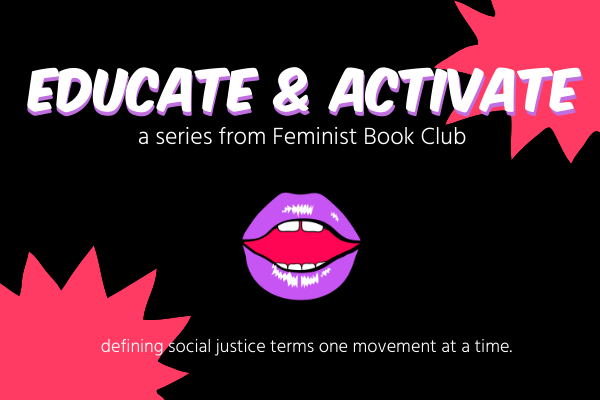Introduction:
Feminist Book Club blog contributors are working together to create posts as an “Educate & Activate” series. We will define a term or movement, provide historical context, and give you additional resources to learn more. We believe that an educated populace can be better activists, accomplices and co-conspirators. It is important to note that these are meant to be brief descriptions and not inclusive or exhaustive of all resources. We urge you to continue being curious, and continue learning more.
Definition
What is BIPOC? BIPOC is an acronym that stands for Black, Indigenous, and People of Color. Black refers to dark-skinned peoples of Africa, Oceania, and Australia or their descendants, Indigenous refers to the ethnic groups native to the Americas, and People of Color is an overarching term for non-white people.
First usage
According to a NY Times article, BIPOC was first used in a tweet in July, 2013 by a now-defunct organization, Grind Toronto.
Historical context
BIPOC is used to discuss the systemic racism, oppression of, and discrimination against different racial groups in a White dominant society. At a reproductive justice training hosted by the Western States Center in 2011, Loretta Stone, the co-founder of SisterSong Women of Color Reproductive Justice Collective, described that an “alliance formed between different minority women’s groups at the 1977 National Women’s Conference in Houston” where the term ‘women of color’ was created.
It is important to remember which term to use when. Black (with a capital B) is an umbrella term for “anyone of African descent, regardless of nationality. Black is appropriate to use when referencing the general Black experience in the United States.” It is important to use Black because not all Black people in the US are African-American. On the other hand, African-American describes Black Americans “who have a family history that directly links to African enslaved people who were brought to the United States between the seventeenth and nineteenth centuries. As their histories and ethnic and cultural roots were systematically removed, it is hard to trace the family roots. This resulted in an amalgamation of cultures which can be the African-American experience.
Indigenous refers to the groups that are “native to the Americas who were here before the colonization by Europeans.” Indigenous includes Native Americans and Indigenous peoples from the Americas who have later immigrated to the US. Official policies and practices have mistreated, discriminated against, and wiped out cultures and identities of Indigenous groups.
People of color is a general term to refer to “non-white individuals who often face discrimination. Non-white people include those who have Asian, Middle Eastern, Indian, and Pacific Island heritage, among others.” Despite falling under an umbrella term, it is important to remember that all these groups have their own histories and cultures, and are affected by different forms of discrimination and oppression. It is always better to be as specific as possible while referring to Indigenous groups by mentioning their tribes and people of color by noting their particular heritage.
BIPOC can be controversial as it erases the different kinds of oppression that different racial groups face. For example, young Black American men are disproportionately killed by police officers, and women of color face more systemic bias in healthcare, socially Black women, than White. Another reason for using BIPOC can be problematic is interchanging one group for the other when specific names of tribes, communities, and ethnicities are not mentioned. Lastly, even communities of color can be anti-Black which is very dangerous.
BIPOC aims to unite all people of color while also recognizing the various unique histories, cultures, identities, of the groups as well as the systemic racism and oppression that each group faces. BIPOC is a good term to use when talking about general issues that non-White people face but should be avoided when referring to problems that a particular community faces, for example, the discrimination that Indigenous people face in healthcare.
In conclusion, the BIPOC Project summarizes the usage of the term BIPOC, “We use the term BIPOC to highlight the unique relationship to whiteness that Indigenous and Black (African Americans) people have, which shapes the experiences of and relationship to white supremacy for all people of color within a U.S. context.”
Resources for Further Education:
The New Jim Crow: Mass Incarceration In The Age of Colorblindness by Michelle Alexander
Borderlands/La Frontera by Gloria Anzaldúa
Manifesta by Jennifer Baumgardner and Amy Richards
Bad Feminist by Roxane Gay
So You Want to Talk About Race by Ijeoma Oluo
Colonize This!: Young Women of Color on Today’s Feminism edited by Daisy Hernandez and Bushra Rehman
Me and White Supremacy by Layla F. Saad
The BIPOC Project website
Bethany Wilkinson’s podcast, The Diversity Gap
NPR’s podcast, Code Switch
Video on terminology.



Pingback: Are Middle Eastern People Really "White"? | Feminist Book Club